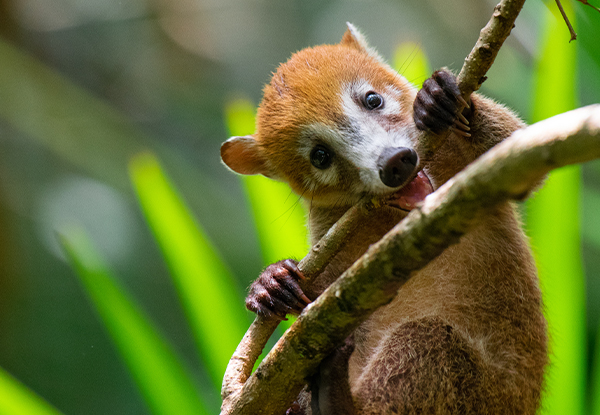South American Coati
These relatives of the raccoon are comfortable on the ground, climbing trees, and even swimming.
Day of Creation: six
Biblical Kind: raccoon (includes raccoons, coatis, ringtails, kinkajous, cacomistles, olingos, and olinguitos)
Status: least concern
Length: 33–44 inches (83.8–111.8 centimeters)
Weight: 4.5–16 pounds (2–7.3 kilograms)
Habitat: tropical and subtropical forests of South America
Lifespan: 7 (wild)–14 (human care) years
Diet: fruit, insects, eggs, and small vertebrates
Family Life: males are solitary, while females live in bands of up to 30 members
Reproduction: 1–7 kits are born after 75-day gestations
Fun Facts
Coatis (koh-AH-tees) are also called “hog-nosed coons” due to their resemblance to raccoons and their piglike snouts. Although their ringed tails are long, they are not prehensile but are instead used for balance and signaling.
Solitary males are called coatimundis, a Brazilian term meaning “lone coati,” and were originally thought to be a separate species since they behave so differently from large bands of females.
Coatis have an excellent sense of smell. Their noses are incredibly flexible and can rotate 60 degrees in either direction to investigate crevices and holes where food might be lurking. They have musk glands on their necks and bellies that amplify their individual scents. They will also rub other scents they like into their fur.
Coatis have long claws that they use for climbing and digging. Coati ankles can rotate 180 degrees, which allows them to walk headfirst down trees.
Bands of coatis are quite vocal, making series of chirps, snorts, whines, and grunts to communicate. They also produce shrill alarm calls that cause the bands to climb trees, then drop and scatter to confuse and avoid predators.
